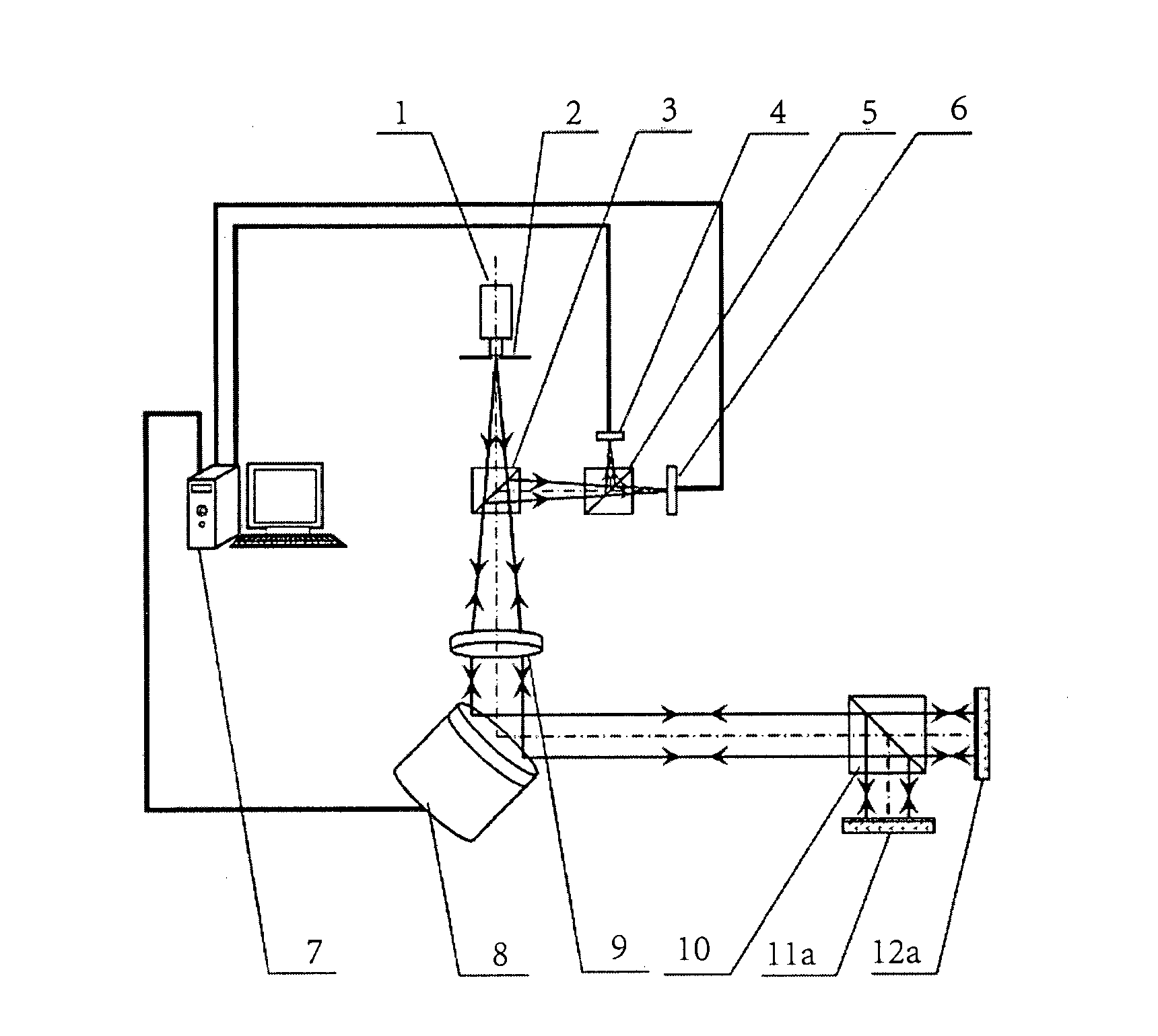Photoelectric autocollimation method and apparatus based on beam drift compensation
a beam drift compensation and autocollimation method technology, applied in the direction of optical radiation measurement, light polarisation measurement, instruments, etc., can solve the problems of limited application of this method, inability to achieve real-time compensation, and limited measurement uncertainty, so as to achieve high autocollimation angle measurement accuracy
- Summary
- Abstract
- Description
- Claims
- Application Information
AI Technical Summary
Benefits of technology
Problems solved by technology
Method used
Image
Examples
embodiment 1
Preferred Embodiment 1
[0078]As shown in FIG. 17, the proposed photoelectric autocollimation method based on beam drift compensation, which employs a reference mirror to reflect the reference beam, comprises following steps:
[0079]S101: A collimated beam is formed by passing a polarized beam emitted from a laser source through a reticle, a polarization-insensitive beamsplitter and a collimating lens successively;
[0080]S102: The collimated beam is reflected by a beam steering device into a first polarizing beamsplitter, which split it into a polarized transmitted beam and a polarized reflected beam, so that both the transmitted and reflected beams are polarized with the polarization states mutually perpendicular to each other;
[0081]S103: The polarized transmitted beam obtained in S102 is reflected by a measurement mirror, and then formulated as a measurement beam. The described measurement beam carries the two-dimensional angular deflection information of the measurement mirror and the...
embodiment 2
Preferred Embodiment 2
[0087]As shown in FIG. 1, the photoelectric autocollimation apparatus based on beam drift compensation, which employs a reference mirror to reflect the reference beam, mainly comprising an autocollimator, a beam steering device 8, a measurement mirror 12a, a data processing controller 7 and a beam drift monitoring and separating unit based on reference mirror 11a:
[0088]The autocollimator mainly comprising a laser source 1, a reticle 2, a polarization-insensitive beamsplitter 3, collimating lens 9 and a first photoelectric position sensor 6 which is positioned on the focal plane of the collimating lens 9 in the reflection direction of the polarization-insensitive beamsplitter 3. The output signal of the first photoelectric position sensor 6 is transferred to the data processing controller 7, which calculates the angular deflection of the measurement mirror 12a according to this output signal.
[0089]A beam steering device 8 is positioned right in front of collima...
embodiment 3
Preferred Embodiment 3
[0094]As shown in FIG. 2, this embodiment includes a first ¼ wave plate 13, and in this embodiment the first polarizing beamsplitter 10 is replaced by a second polarization-insensitive beamsplitter 10. In this embodiment, all the other constitutions remain the same as those in preferred embodiment 2. The first ¼ wave plate 13 is positioned between the second polarization-insensitive beamsplitter 10 and the reference mirror 11a. The laser beam emitted from the laser source 1 is a linear polarized beam as shown in FIG. 7 with the polarization plane coincident with the transmitted polarization plane of the second polarizing beamsplitter 5.
PUM
 Login to View More
Login to View More Abstract
Description
Claims
Application Information
 Login to View More
Login to View More - R&D
- Intellectual Property
- Life Sciences
- Materials
- Tech Scout
- Unparalleled Data Quality
- Higher Quality Content
- 60% Fewer Hallucinations
Browse by: Latest US Patents, China's latest patents, Technical Efficacy Thesaurus, Application Domain, Technology Topic, Popular Technical Reports.
© 2025 PatSnap. All rights reserved.Legal|Privacy policy|Modern Slavery Act Transparency Statement|Sitemap|About US| Contact US: help@patsnap.com



